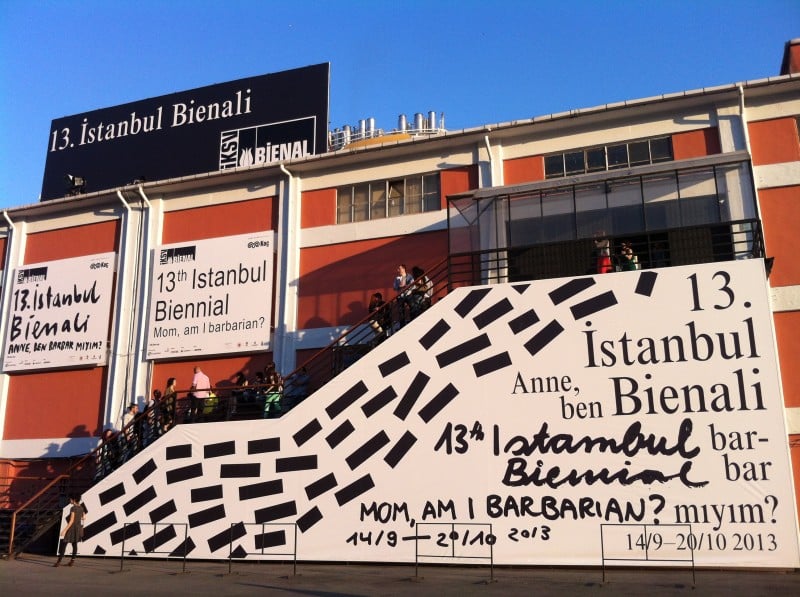
The Venice Biennale. Photo: courtesy the Venice Biennale.
What is the role of biennials, triennials, quadrennials, and even quinquennials in the contemporary art? For art world outsiders the significance and attention surrounding these events may be difficult to understand.
Biennials are international showcases for contemporary art taking place every two years, and are the most popular -ennial by far. Today, in the globalized world of contemporary art, there's over 100 biennials in cities such as São Paulo, Istanbul, Moscow, and Sydney competing for star curators and big-name artists, and the events have increasingly become a source of local pride, tourism, cultural capital, and revenue for cities.
Biennials, in other words, are a big deal, and result in big business.
Founded in 1895, the Venice Biennale is by far the oldest and most prestigious. It was created for the precise reason of establishing a platform for art world participants to compare and contrast the art created across the world, and is colloquially known as the "Olympics of art."

The entrance to the 2013 Istanbul Biennial. Courtesy the Istanbul Biennial.
"These large shows also are the occasions for which new relevant work is produced and seen in relation to and at the same time with other relevant art work," Klaus Biesenbach, co-founder of the Berlin Biennale told artnet News in a recent interview. "And these big shows have the critical mass, and public visibility of making contemporary art present as a challenge and as a statement. They even suggest art still has a disruptive relevance in our society."
"Going to an art fair," Biesenbach continued, "is nothing in comparison to going to a curated exhibition where organizers and artists really cared for the form and the content of the exhibition, not its sell-ability and or the fact if visitors can take small or medium sized colorful pieces home and place them behind their couches and hope they quintuple their value in two years."
While this is the true spirit of the biennial, the art world's increasing commercialization has affected even these bastions of fresh artistic vision and experimentation and blurred the lines a bit. Collectors have begun to peruse the shows as if they were fairs and it's no longer taboo for collectors to buy art after a biennial has concluded, or at least make an offer while there.
For example, it was reported that French mega collector and luxury goods magnate François Pinault bought a series of eight large-scale paintings by German artist Georg Baselitz last May for €8 million ($8.9 million) at the Venice Biennale.

Cockatoo Island, the site of the Biennale of Sydney. Courtesy of Biennale of Sydney.
At the same time, the influence and impact of major biennials on the art market is so strong that the spotlight on artists' work can launch careers—or even shift geographies.
For example, at the Venice Biennale in 1964, the US Pavilion's exhibition and Leo Castelli's supplemental show on the Grand Canal dedicated to pop art announced the arrival of the genre on the international stage and shifted the Eurocentric focus of the art world towards the US. The show featured works by now-household names such as Robert Rauschenberg, Jasper Johns, Jim Dine and Claes Oldenburg.
Rauschenberg received the Grand Prize, and, as the history of the fairnotes, "provoked much heated discussion" among the European elite.
No hay comentarios:
Publicar un comentario